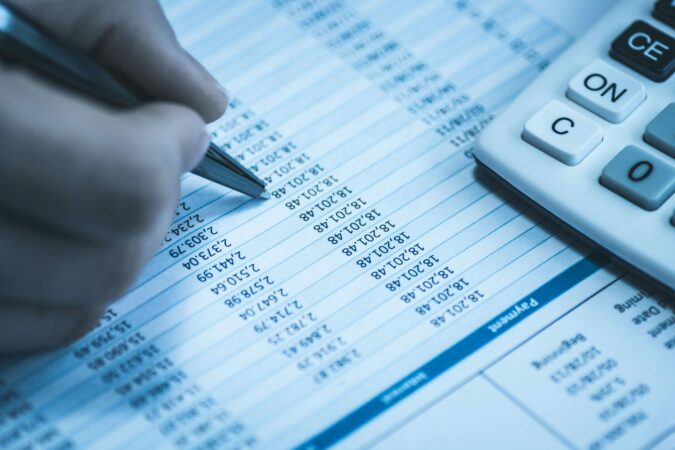Balance Sheet Definition & Examples Assets = Liabilities + Equity

Balance sheets, like all financial statements, will have minor differences between organizations and industries. However, there are several “buckets” and line items that are almost always included in common balance sheets. We briefly go through commonly found line items under Current Assets, Long-Term Assets, Current Liabilities, Long-term Liabilities, and Equity. In this form, it is easier to highlight the relationship between shareholder’s equity and debt (liabilities). As you can see, shareholder’s equity is the remainder after liabilities have been subtracted from assets. This is because creditors – parties that lend money such as banks – have the first claim to a company’s assets.
What are assets, liabilities and equity?
- Right after the bank wires you the money, your cash and your liabilities both go up by $10,000.
- A balance sheet is one of the primary statements used to determine the net worth of a company and get a quick overview of its financial health.
- Expenses are the costs required to conduct business operations and produce revenue for the company.
- Our easy online application is free, and no special documentation is required.
- Here we see that the sum of liabilities and equity equals the total assets and the equation balances.
- This account includes the total amount of long-term debt (excluding the current portion, if that account is present under current liabilities).
The regression model and descriptive statistics were used to show the relationship between total assets, liabilities, and owners’ equity. The model was then used to show a new form of the accounting equation, rates of change of liabilities, and owners’ equity. Finally, the author explains the constant term which is not explained by other authors of the accounting field. This basic accounting equation “balances” the company’s balance sheet, showing that a company’s total assets are equal to the sum of its liabilities and shareholders’ equity. This formula, also known as the balance sheet equation, shows that what a company owns (assets) is purchased by either what it owes (liabilities) or by what its owners invest (equity). The accounting equation represents a fundamental principle of accounting that states that a company’s total assets are equal to the sum of its liabilities and equity.
Rearranging the Accounting Equation
Metro Courier, Inc., was organized as a corporation on January 1, the company issued shares (10,000 shares at $3 each) of common stock for $30,000 cash to Ron Chaney, his wife, and their son. Accounts Payables, or AP, is the amount a company owes suppliers for items or services purchased on credit. As the company pays off its AP, it decreases along with an equal amount decrease to the cash account. Current assets can be converted to cash within one financial year, while non-current assets are intended to be held for more than one year, and are not readily convertible into cash.
Elements of Financial Statements
The accounting equation sets the foundation of “double-entry” accounting, since it shows a company’s asset purchases and how they were financed (i.e. the off-setting entries). Shareholders’ equity is the total value of the company expressed in dollars. Put another way, it is the amount that would remain if the company liquidated all of its assets and paid off all of its debts. The remainder is the shareholders’ equity, which would be returned to them. In this article, we take a deep dive to understand the core attributes of the accounting equation, its role in day to day transactions and how it plays a crucial role in accurate financial reporting. Under the umbrella of accounting, liabilities refer to a company’s debts or financially-measurable obligations.
- Balance sheets, like all financial statements, will have minor differences between organizations and industries.
- Owner contributions and income result in an increase in capital, whereas withdrawals and expenses cause capital to decrease.
- Metro Corporation earned a total of $10,000 in service revenue from clients who will pay in 30 days.
- Review your balance sheet each month, and use the analytical tools to assess the financial position of your small business.
- The type of equity that most people are familiar with is “stock”—i.e.
If a company’s assets were hypothetically liquidated (i.e. the difference between assets and liabilities), the remaining value is the shareholders’ equity account. If a business buys raw materials and pays in cash, it will result in an increase in the company’s inventory (an asset) while reducing cash capital (another asset). Because there are two or more accounts affected by every transaction carried out by a company, the accounting system is referred to as double-entry accounting.
What Are Assets, Liabilities, and Equity?
We also allow you to split your payment across 2 separate credit card transactions or send a payment link email to another person on your behalf. If splitting your payment into 2 transactions, a minimum payment of $350 is required for the first transaction. All programs require the completion of a brief online enrollment form before payment.
Introduction to the Accounting Equation

This account includes the total amount of long-term debt (excluding the current portion, if that account is present under current liabilities). This account is derived from the debt schedule, which outlines all of the company’s outstanding debt, the interest expense, and the principal repayment for every period. We know that every business holds some properties known as assets. The claims to the assets owned by a business entity are primarily divided into two types – the claims of creditors and the claims of owner of the business. In accounting, the claims of creditors are referred to as liabilities and the claims of owner are referred to as owner’s equity. That part of the accounting system which contains the balance sheet and income statement accounts used for recording transactions.
- Here we can see the list of all liabilities that have been reported on Hershey company balance sheet for 2023.
- Double-entry accounting is a system where every transaction affects at least two accounts.
- The shareholders’ equity number is a company’s total assets minus its total liabilities.
- Metro Corporation collected a total of $5,000 on account from clients who owned money for services previously billed.
- All of our content is based on objective analysis, and the opinions are our own.
- An analyst can generally use the balance sheet to calculate a lot of financial ratios that help determine how well a company is performing, how liquid or solvent a company is, and how efficient it is.
Assets will typically be presented as individual line items, such as the examples above. Then, current and fixed assets are subtotaled and finally totaled together. Current liabilities are important because they can be used to determine how well a company is performing by whether or not they can afford to pay their current liabilities with the revenue generated. A company that can’t afford to pay may not be operating at the optimum level. If a transaction is completely omitted from the accounting books, it will not unbalance the accounting equation.

He is a CFA charterholder as well as holding FINRA Series 7, 55 & 63 licenses. He currently researches and teaches economic sociology and the social studies of finance at the Hebrew University in Jerusalem. Lou paid a 3-month advance amounting to $3000 for a small painting studio that she rented on 1 December 2020. The term of the rental agreement is 2 years but the owner can request Lou to vacate the property at anytime by serving a notice. The studio will cost Lou $1000 per month to rent and has a market value of $100,000. An asset whose value cannot be measured is not shown in the balance sheet.
Since accounting is based on historical transactions and events, any assets that appear on a balance sheet need to be previously acquired. Unlike liabilities, equity is not a fixed amount with a fixed interest rate. Expenses are the costs required to conduct business operations and produce revenue for the company. assets equals These liabilities are noncurrent, but the category is often defined as “long-term” in the balance sheet. Companies will use long-term debt for reasons like not wanting to eliminate cash reserves, so instead, they finance and put those funds to use in other lucrative ways, like high-return investments.
[/restrict]